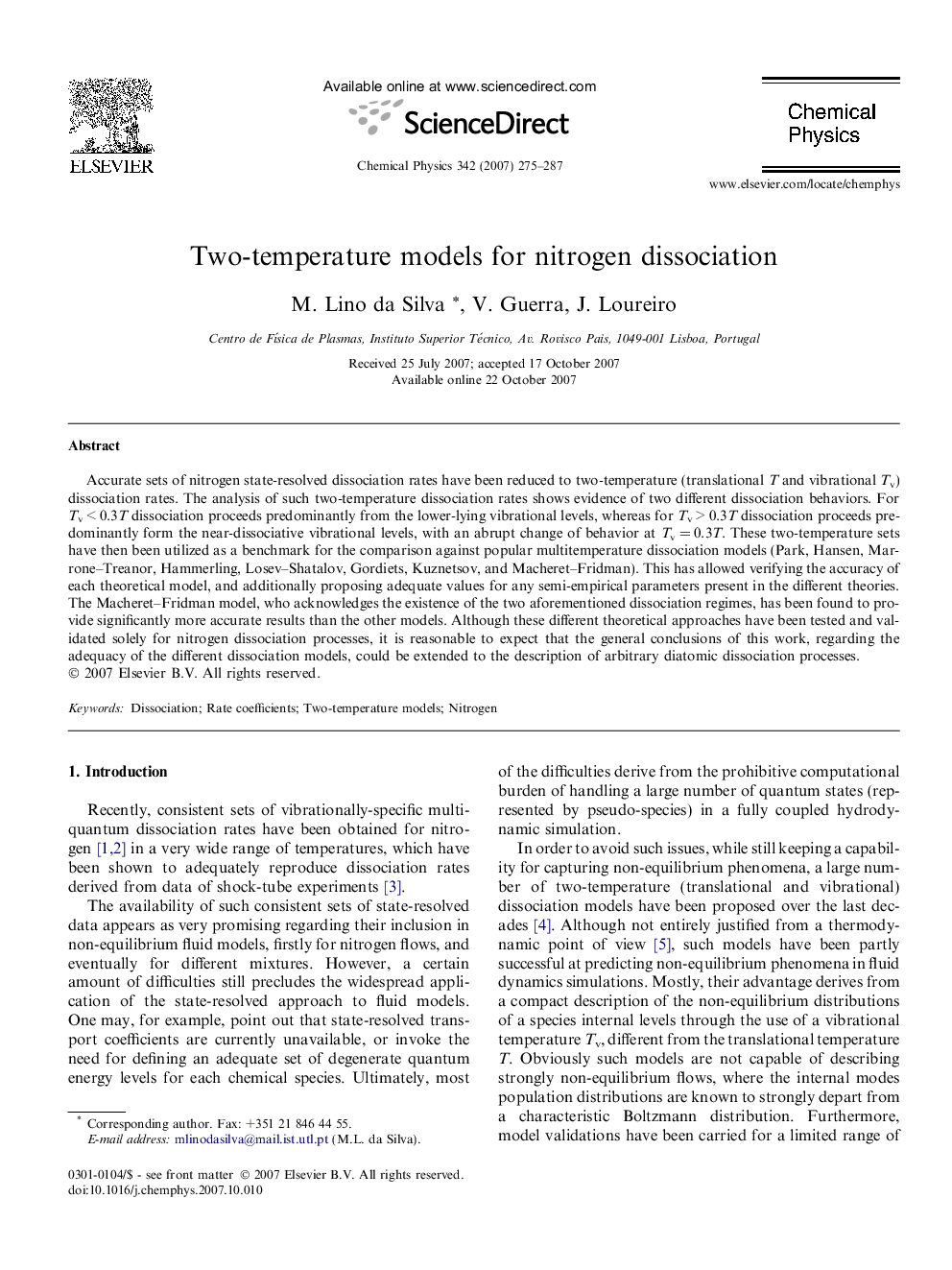| Article ID | Journal | Published Year | Pages | File Type |
|---|---|---|---|---|
| 5376151 | Chemical Physics | 2007 | 13 Pages |
Abstract
Accurate sets of nitrogen state-resolved dissociation rates have been reduced to two-temperature (translational T and vibrational Tv) dissociation rates. The analysis of such two-temperature dissociation rates shows evidence of two different dissociation behaviors. For Tv < 0.3T dissociation proceeds predominantly from the lower-lying vibrational levels, whereas for Tv > 0.3T dissociation proceeds predominantly form the near-dissociative vibrational levels, with an abrupt change of behavior at Tv = 0.3T. These two-temperature sets have then been utilized as a benchmark for the comparison against popular multitemperature dissociation models (Park, Hansen, Marrone-Treanor, Hammerling, Losev-Shatalov, Gordiets, Kuznetsov, and Macheret-Fridman). This has allowed verifying the accuracy of each theoretical model, and additionally proposing adequate values for any semi-empirical parameters present in the different theories. The Macheret-Fridman model, who acknowledges the existence of the two aforementioned dissociation regimes, has been found to provide significantly more accurate results than the other models. Although these different theoretical approaches have been tested and validated solely for nitrogen dissociation processes, it is reasonable to expect that the general conclusions of this work, regarding the adequacy of the different dissociation models, could be extended to the description of arbitrary diatomic dissociation processes.
Related Topics
Physical Sciences and Engineering
Chemistry
Physical and Theoretical Chemistry
Authors
M. Lino da Silva, V. Guerra, J. Loureiro,
